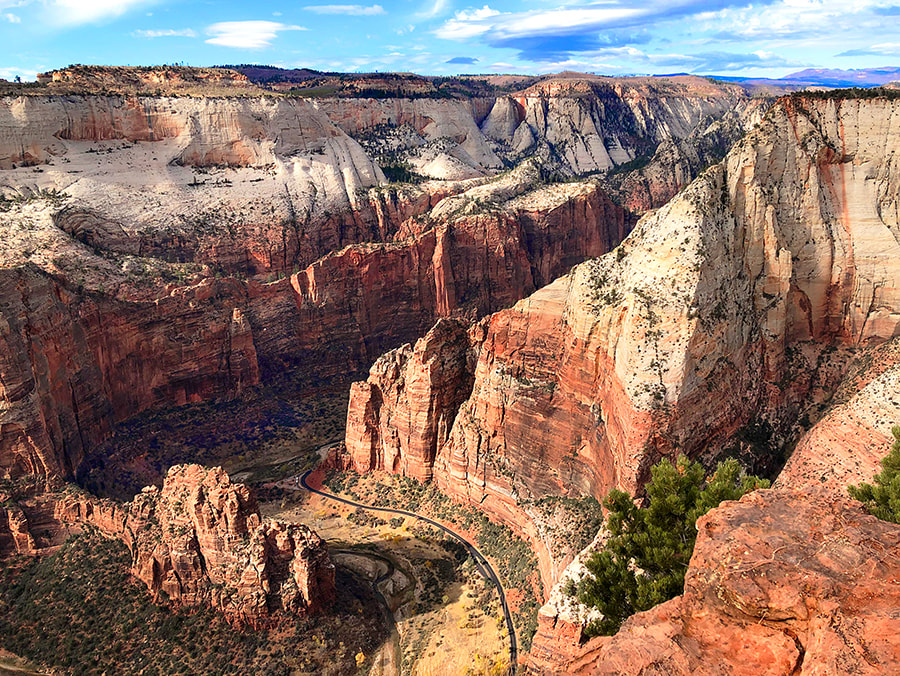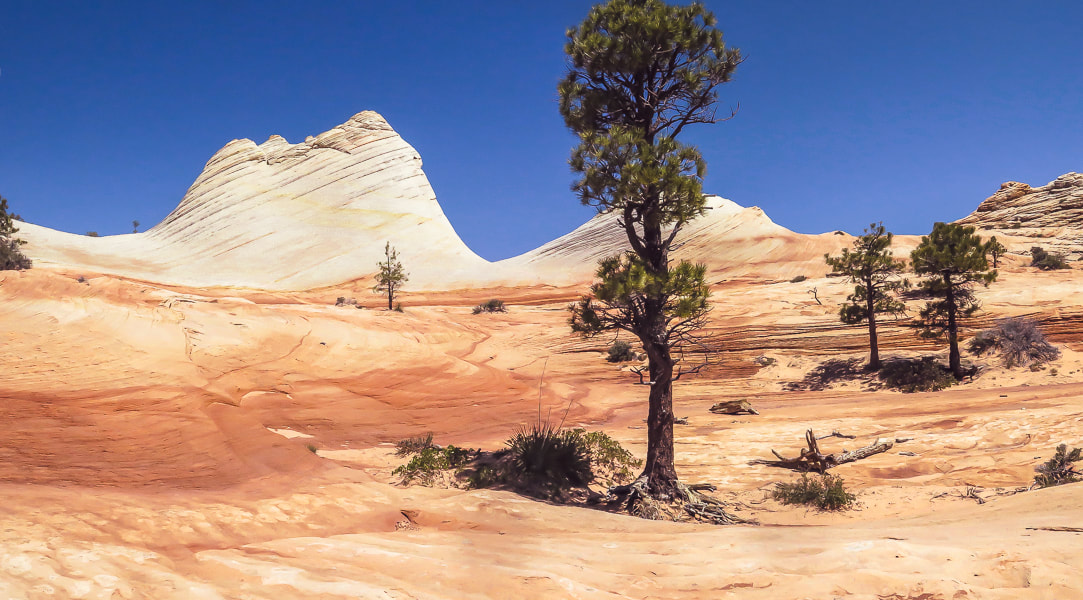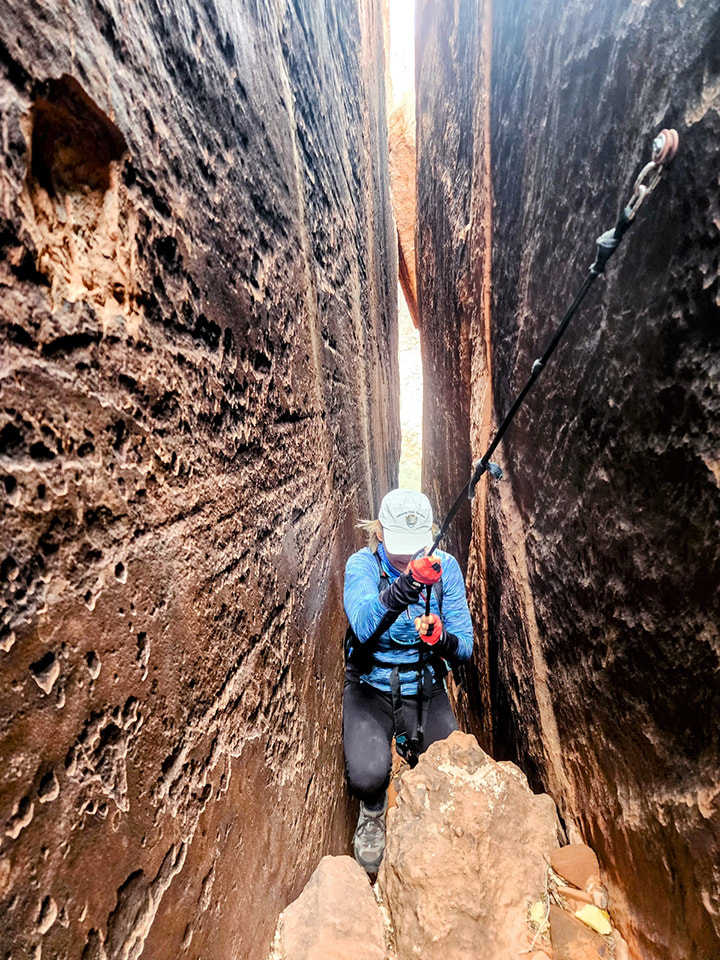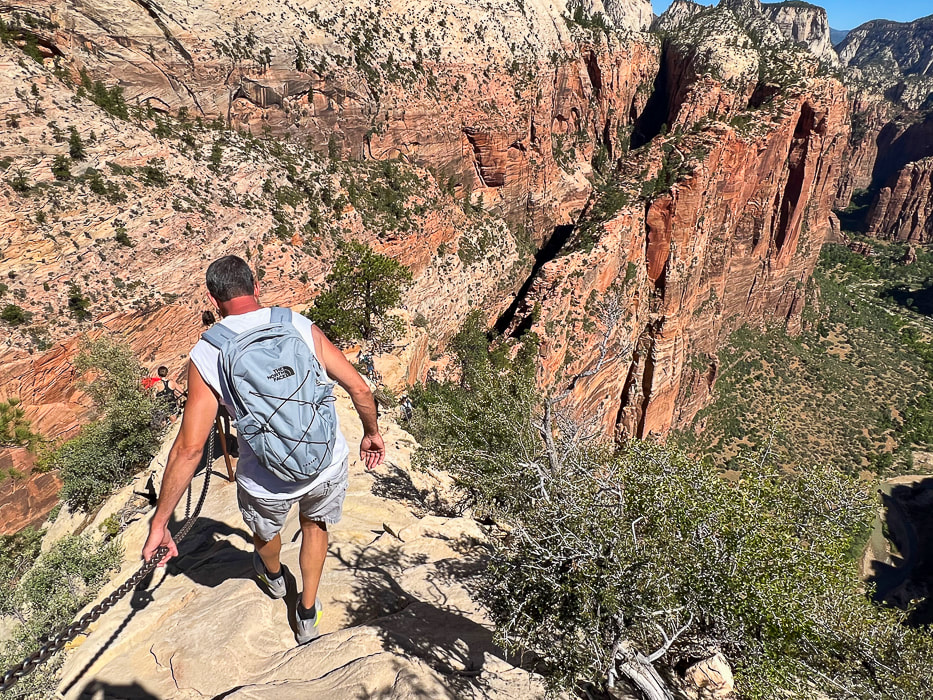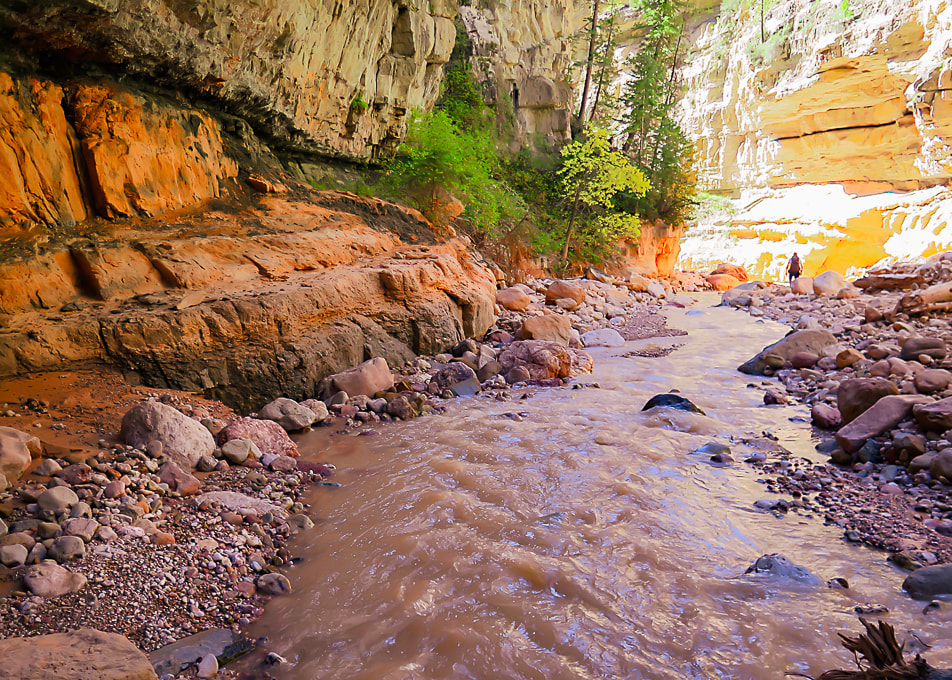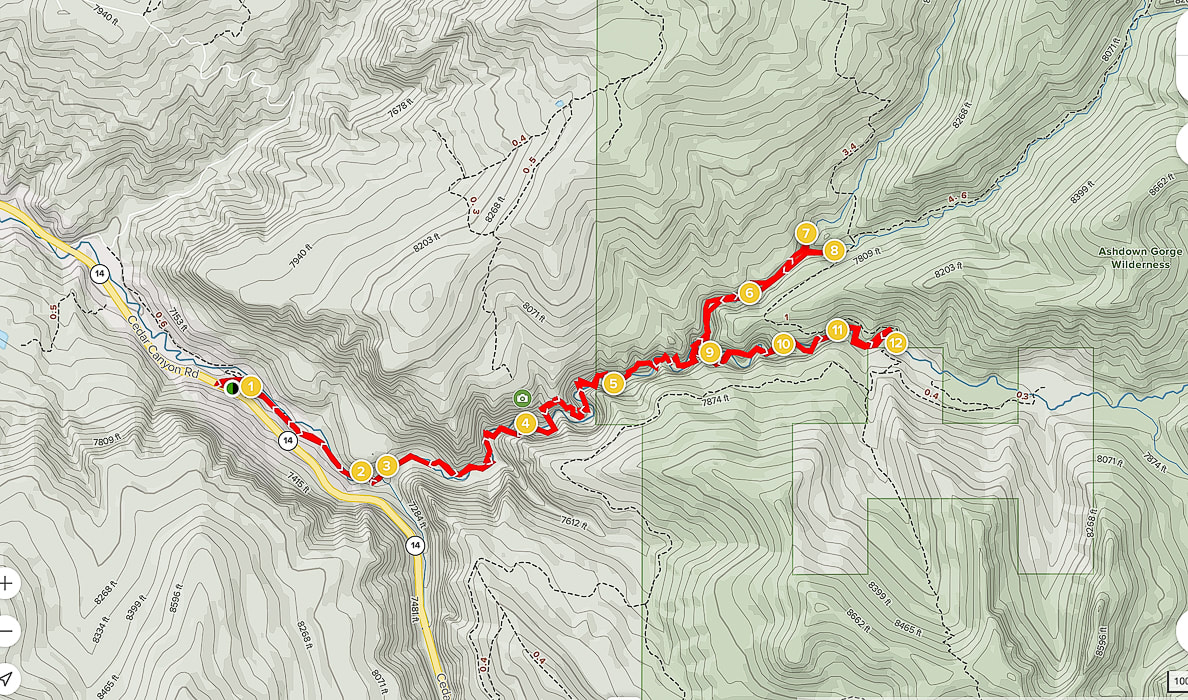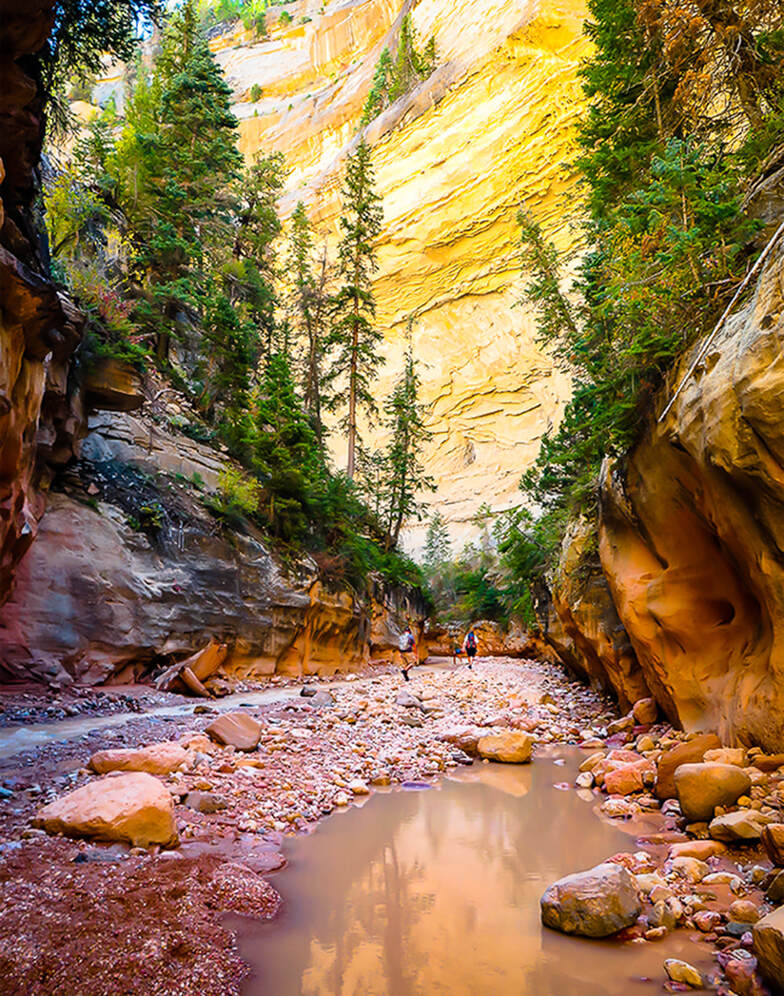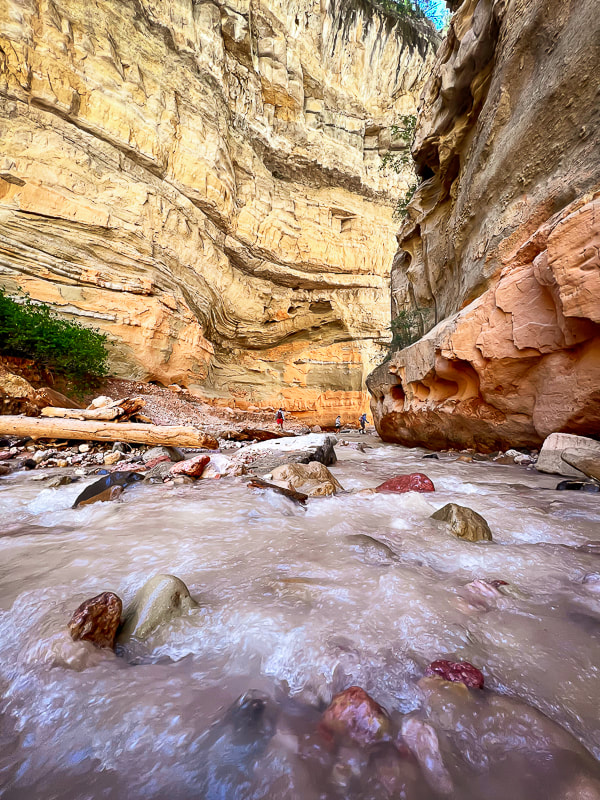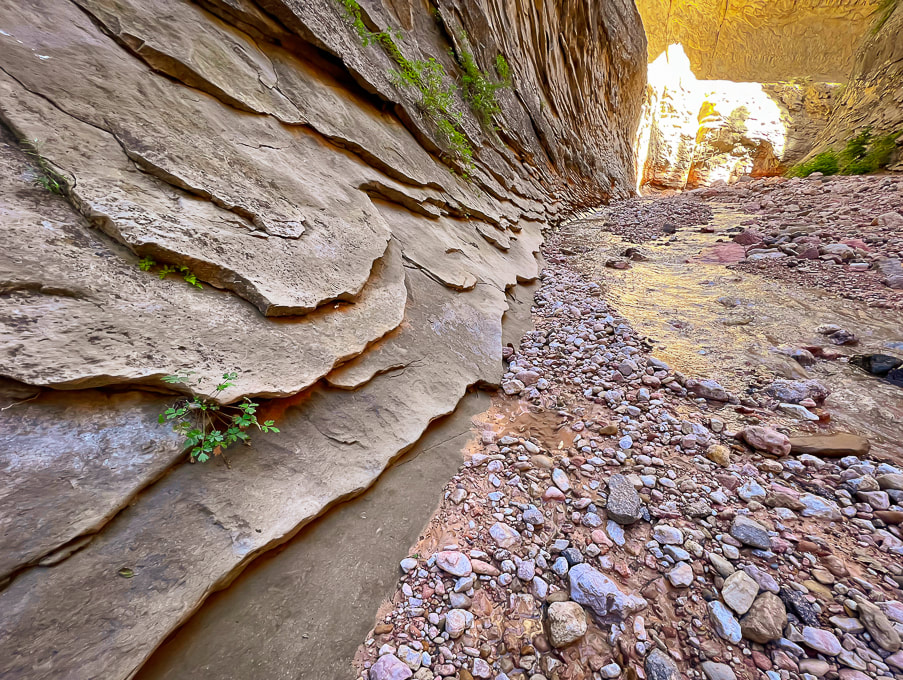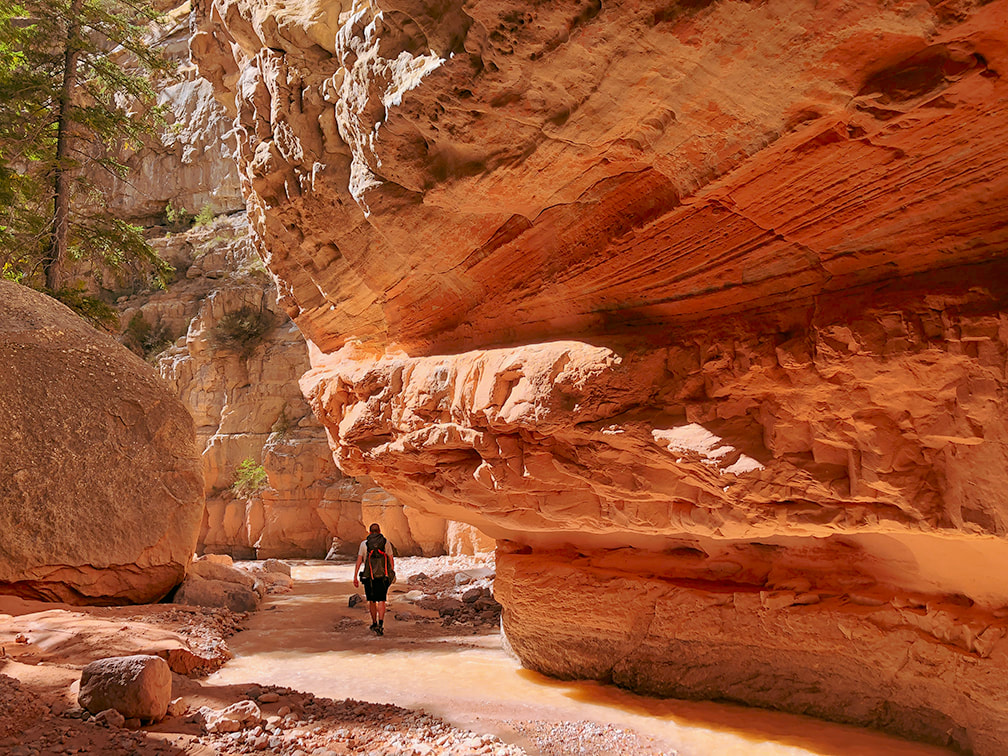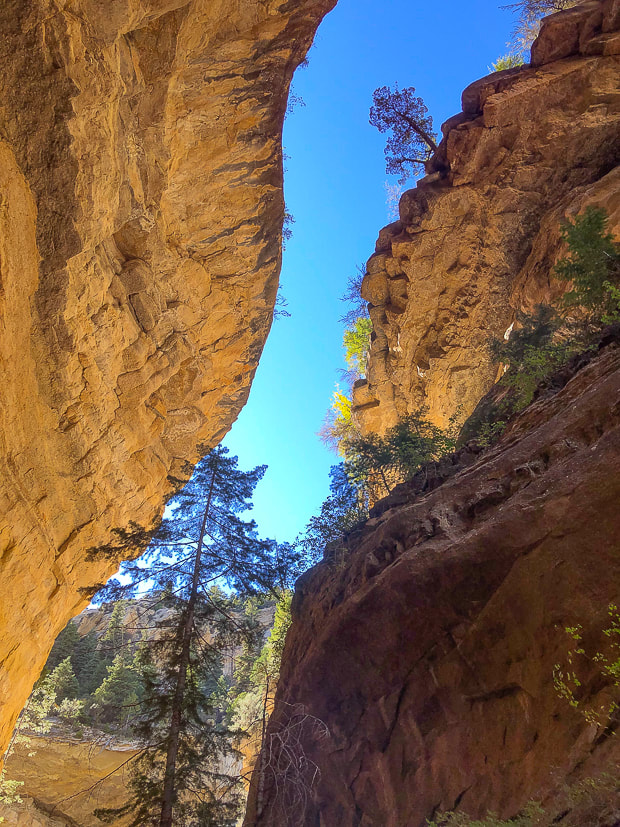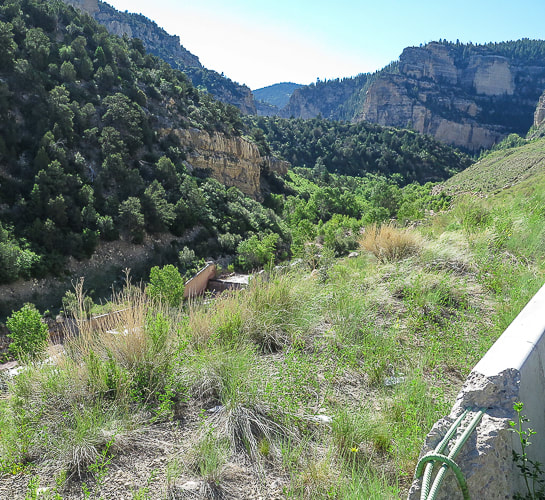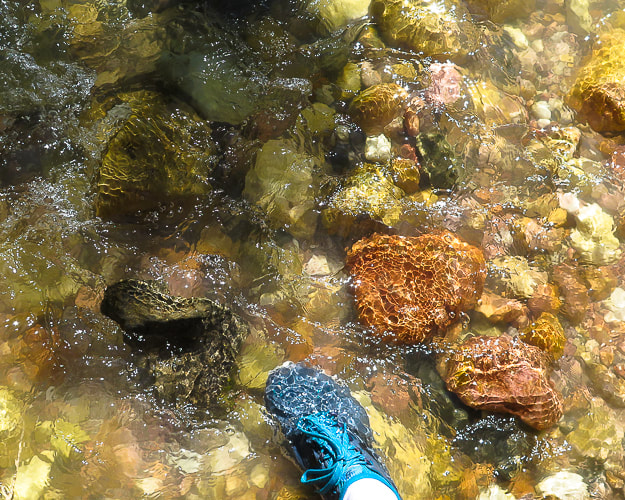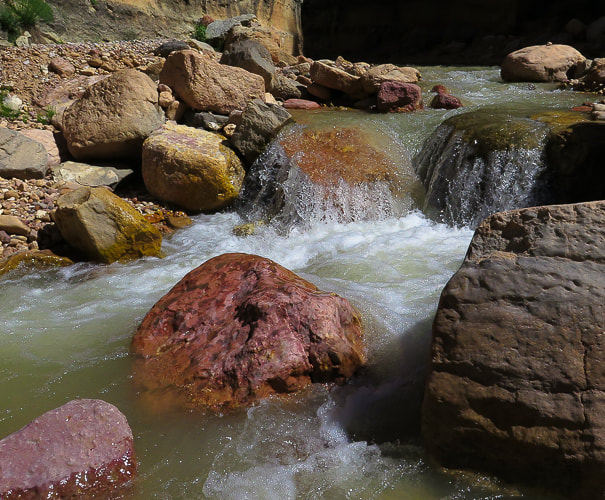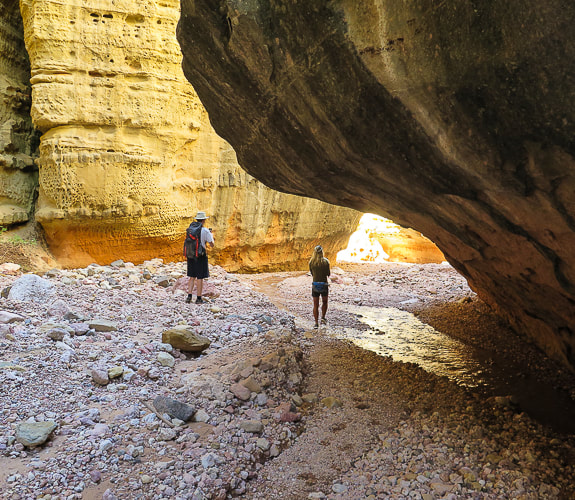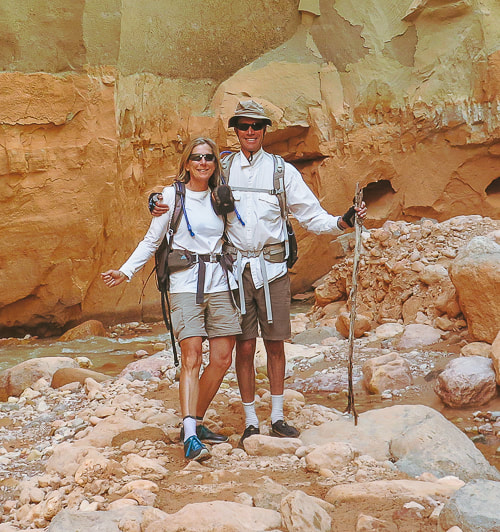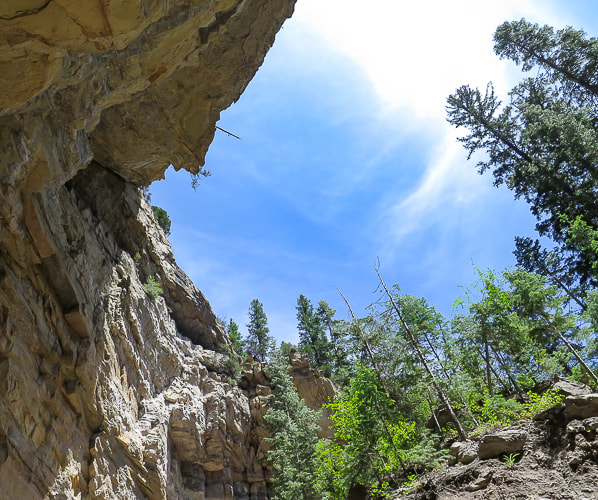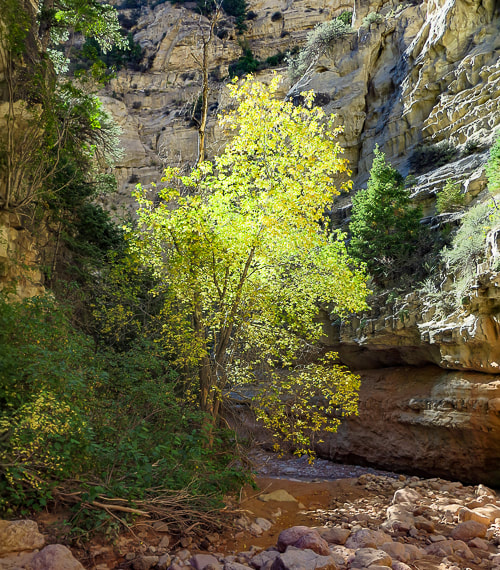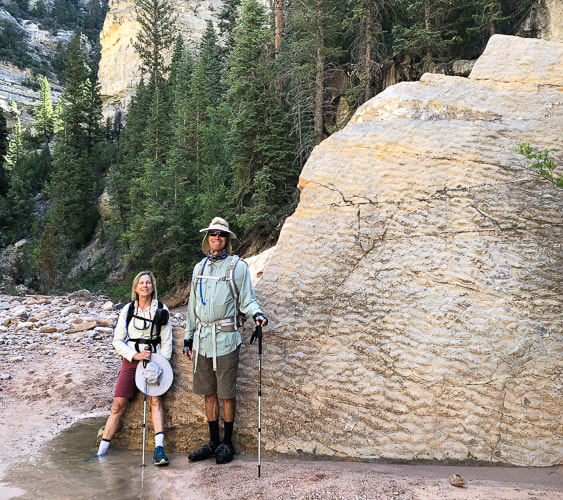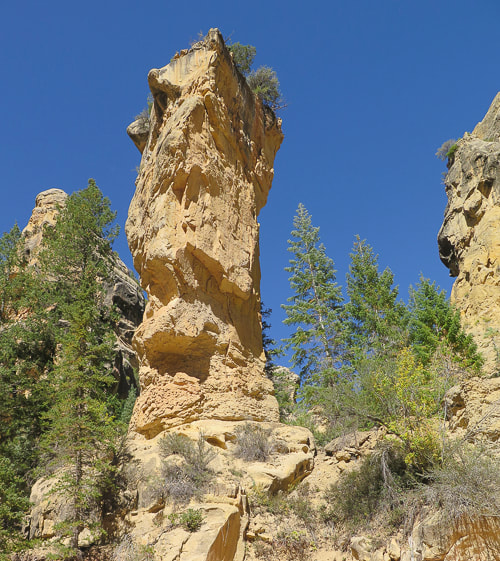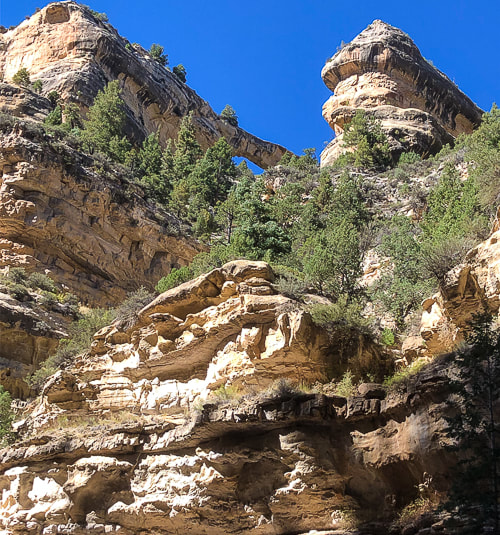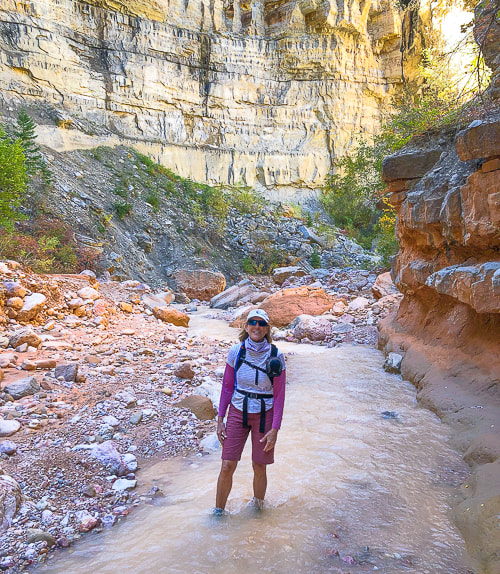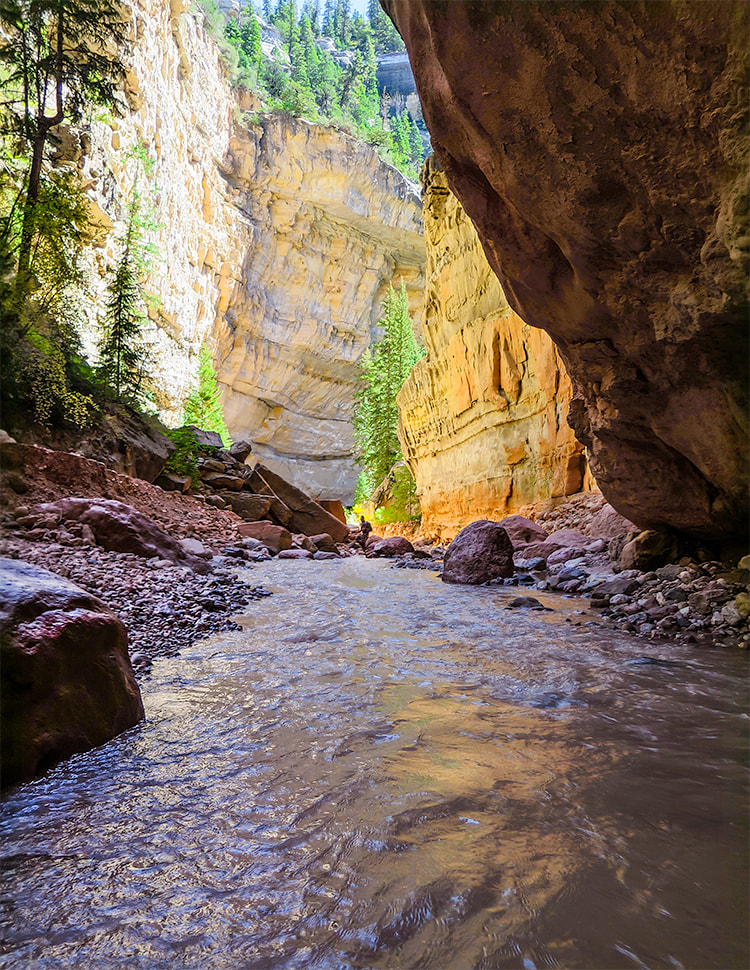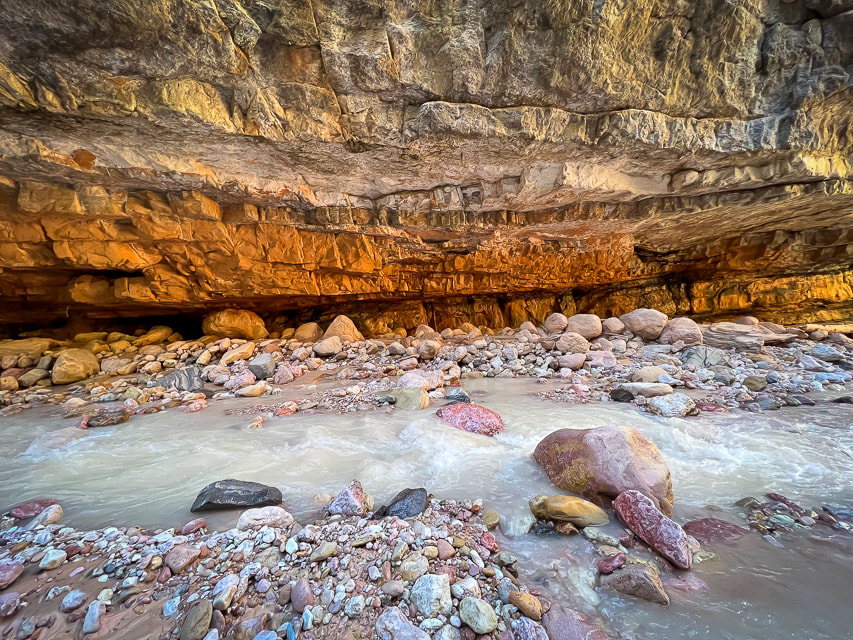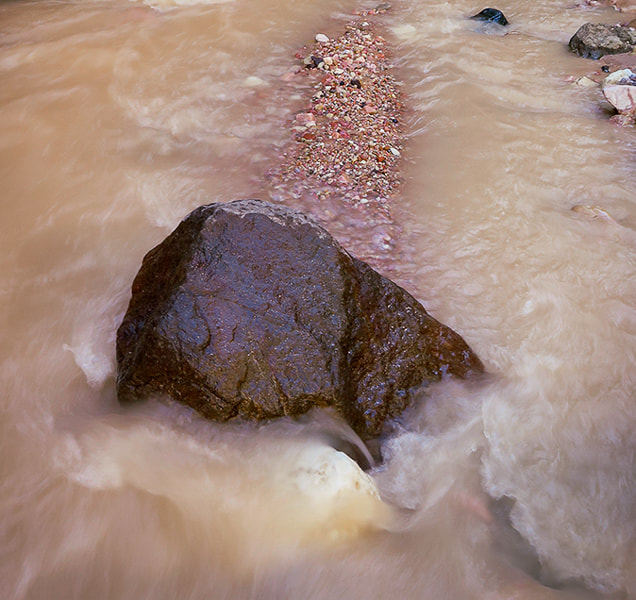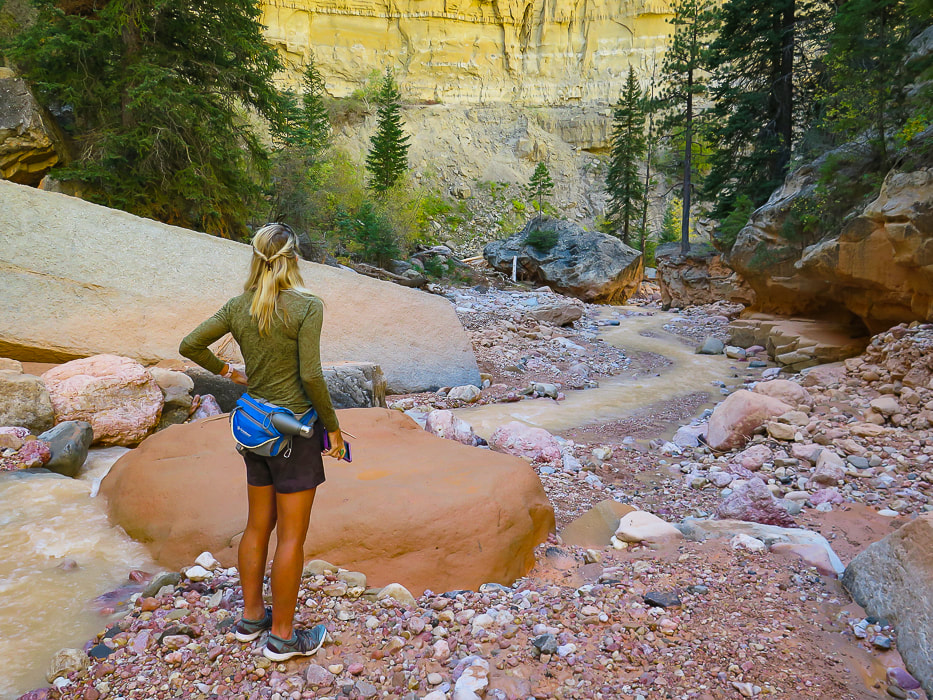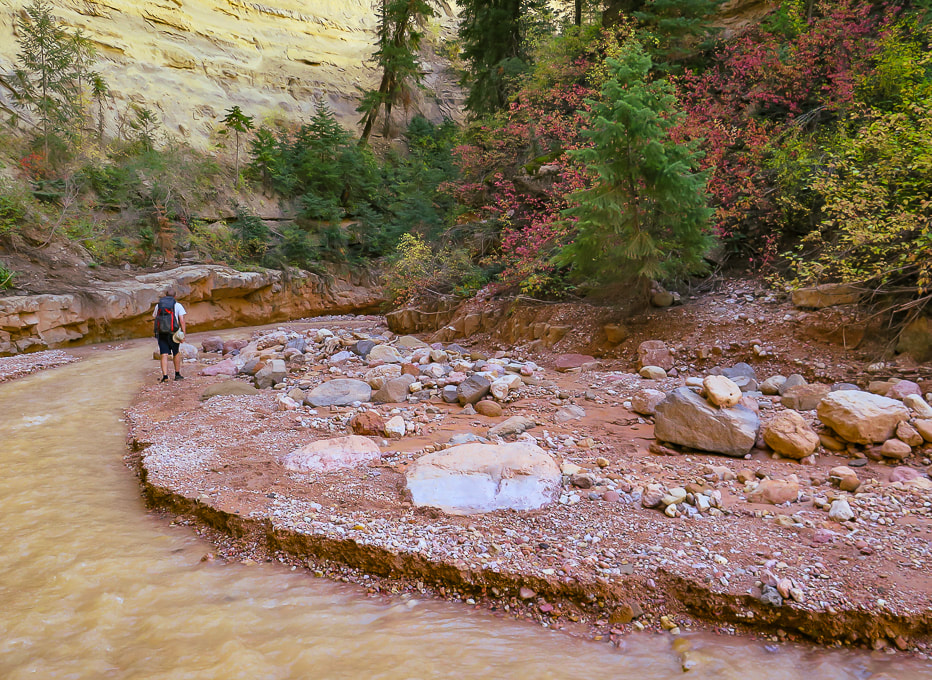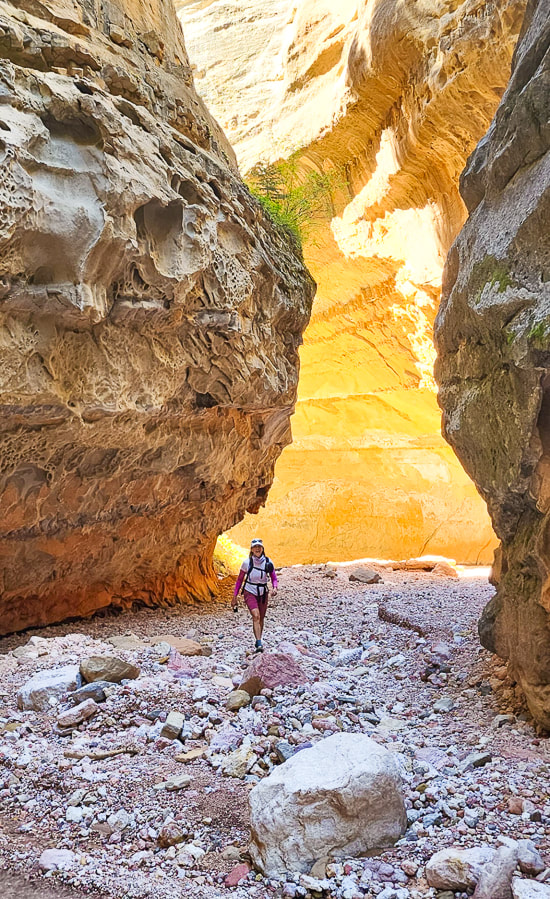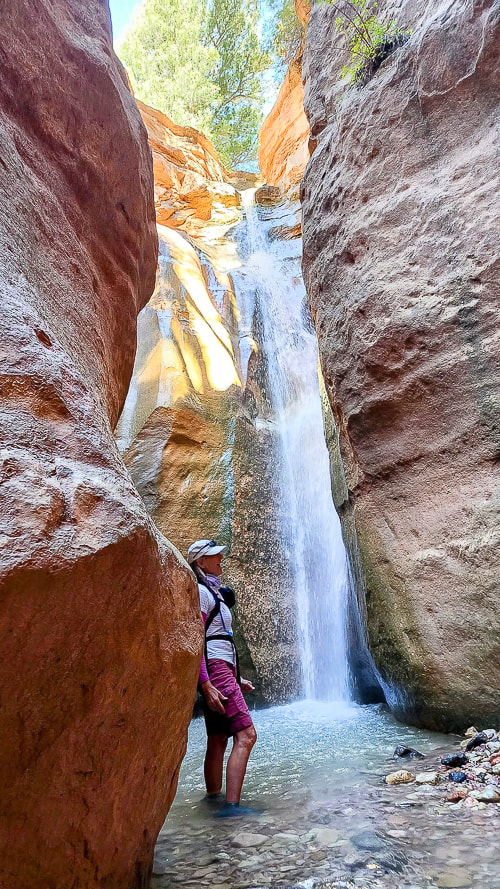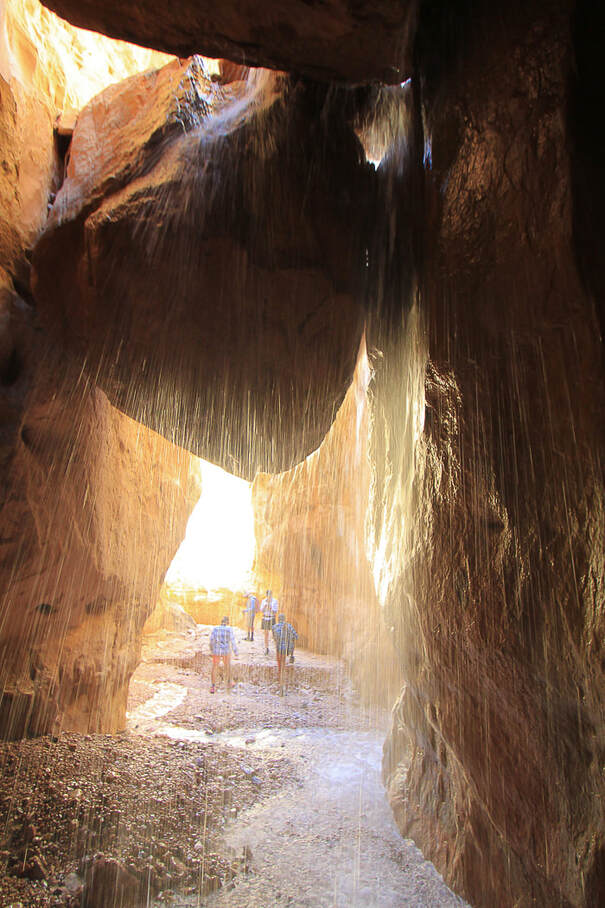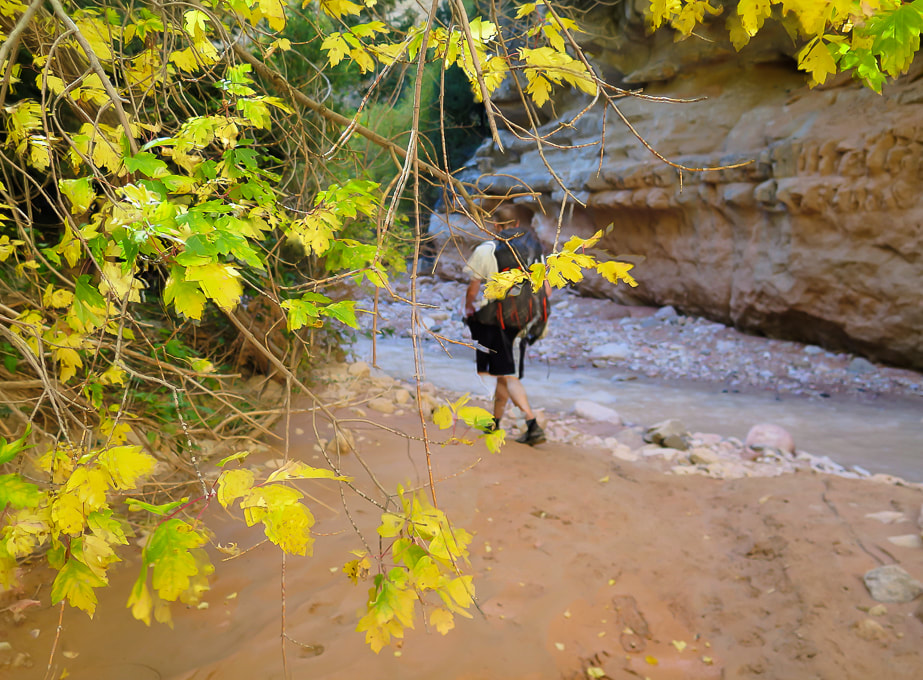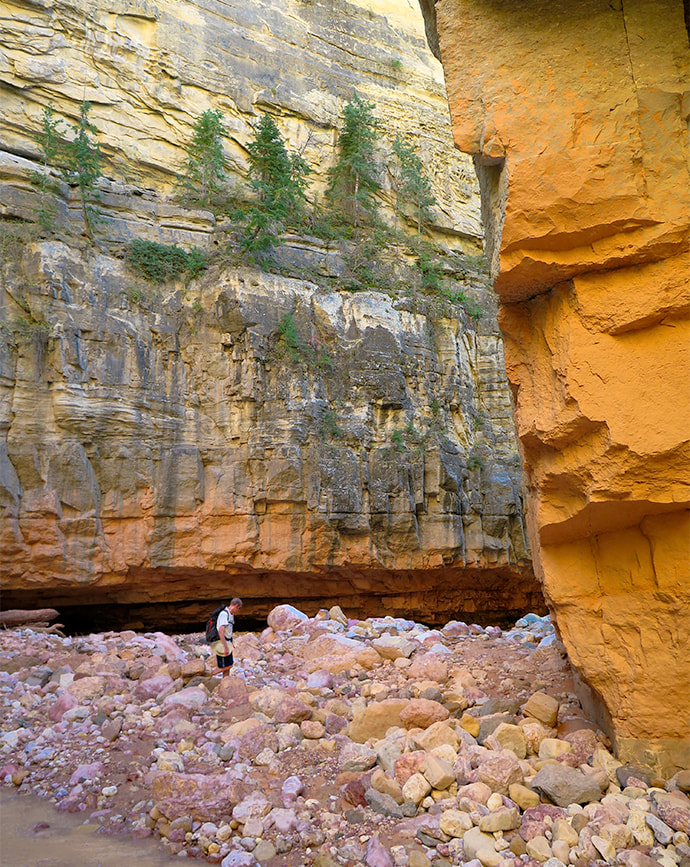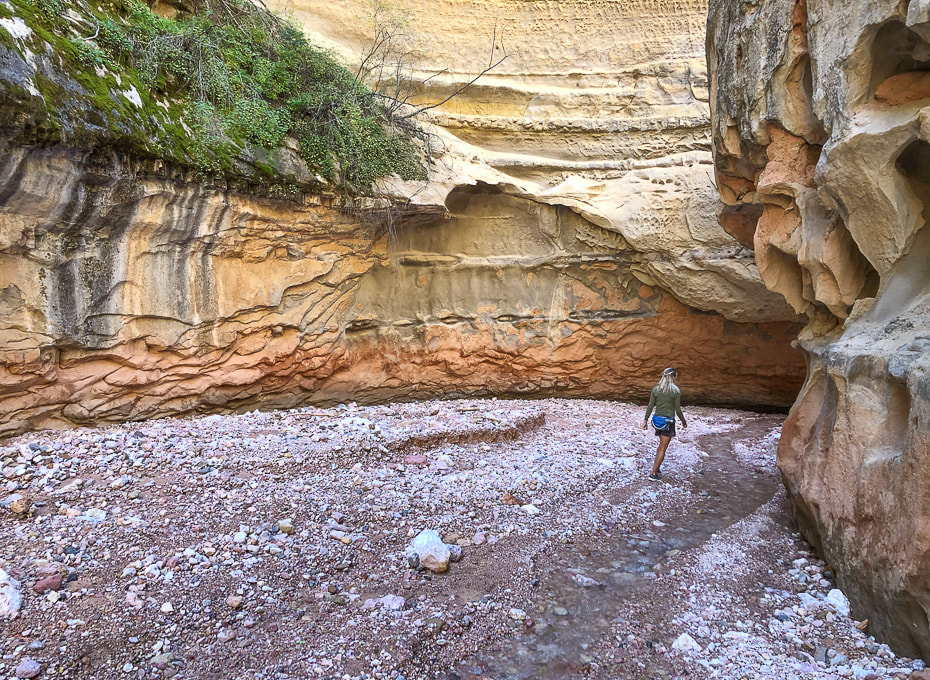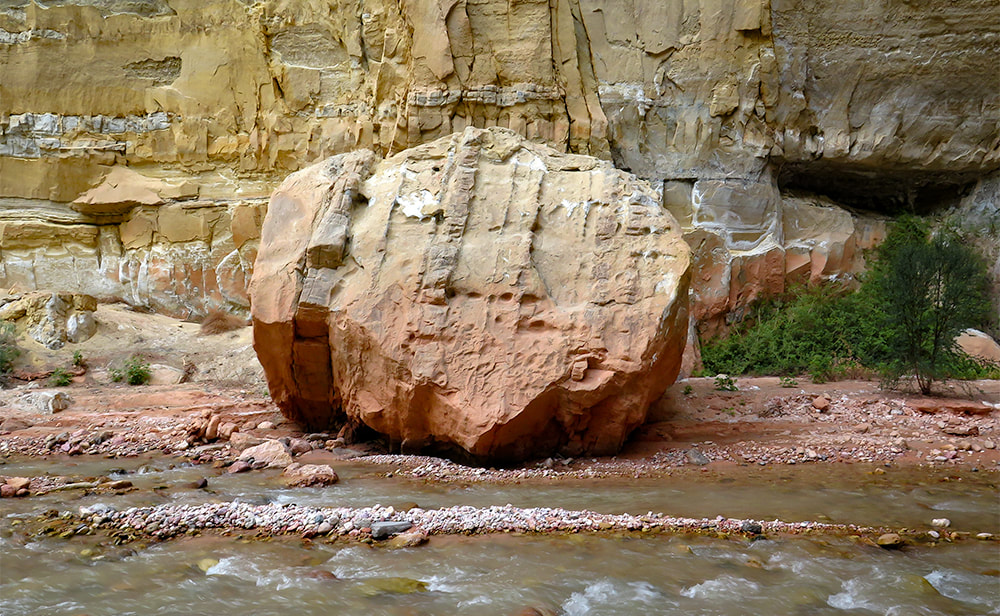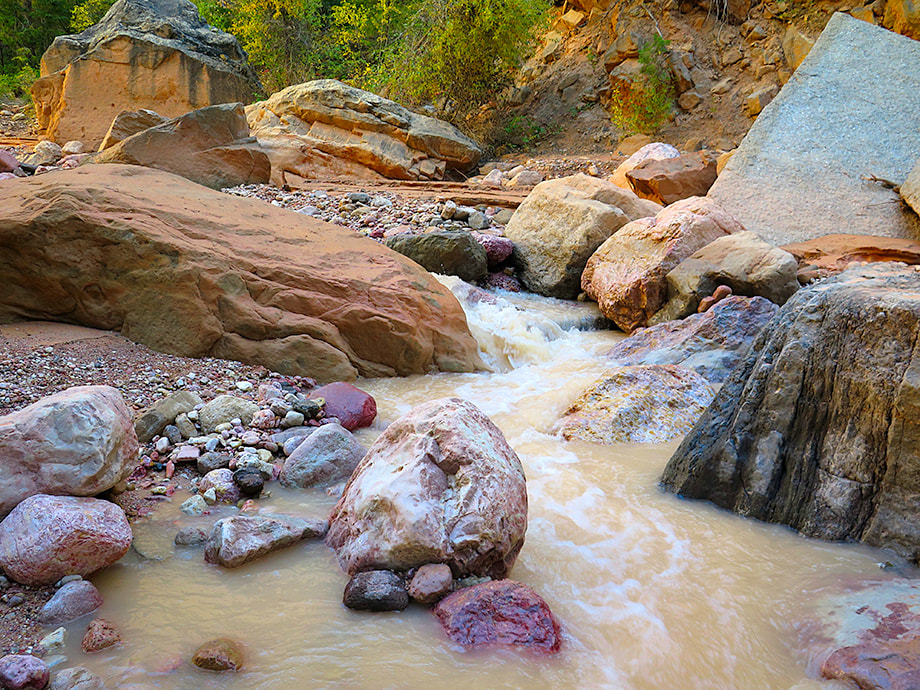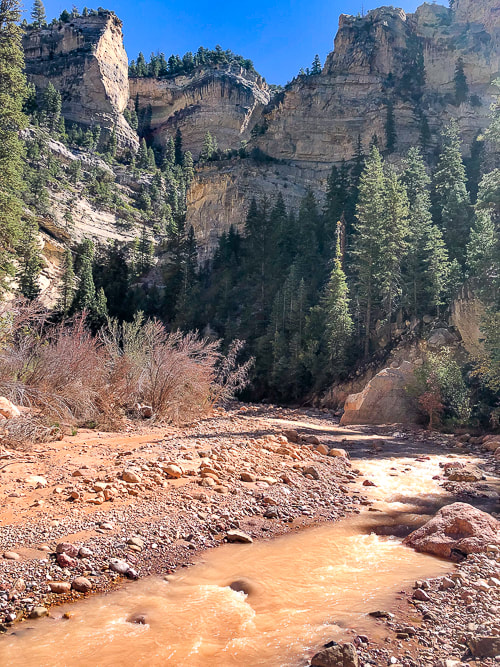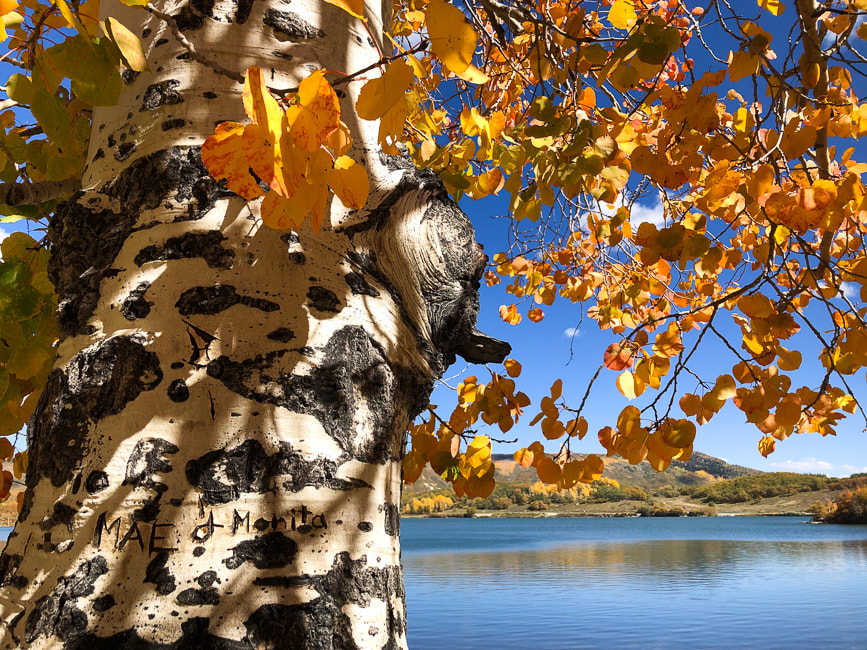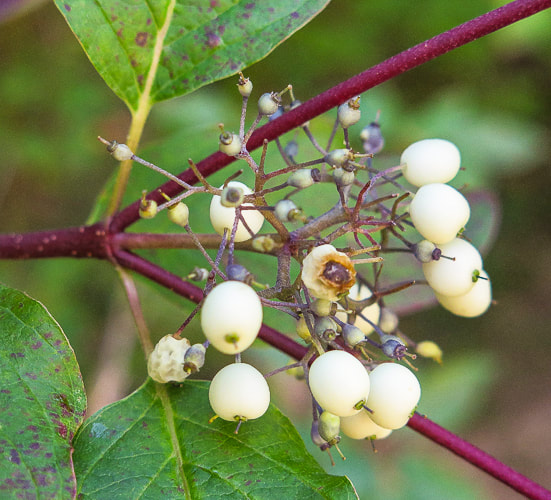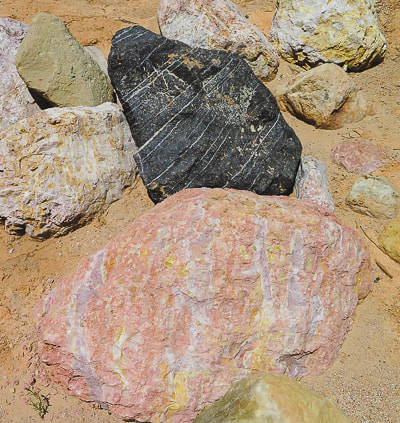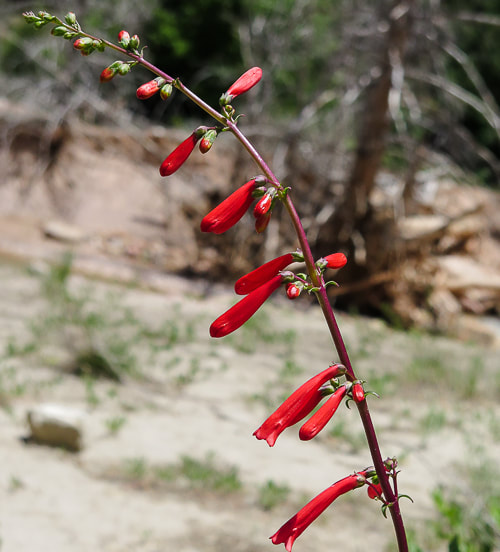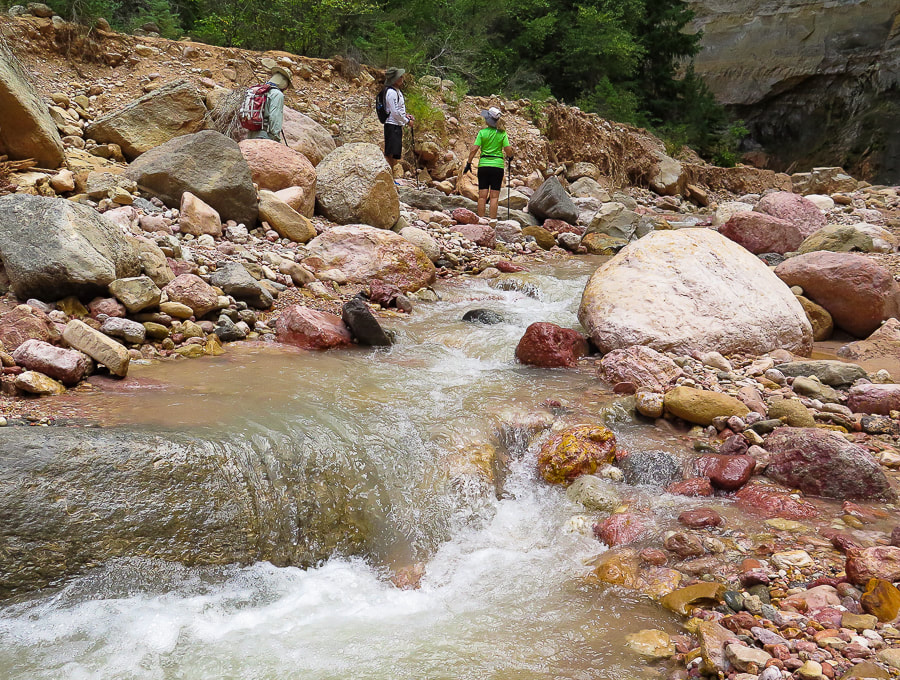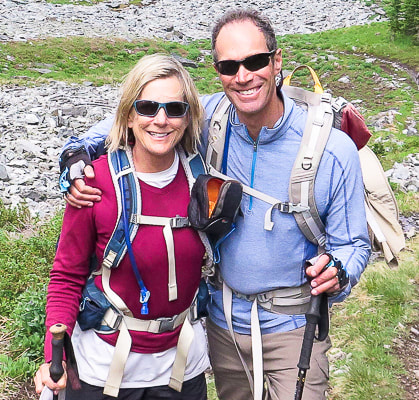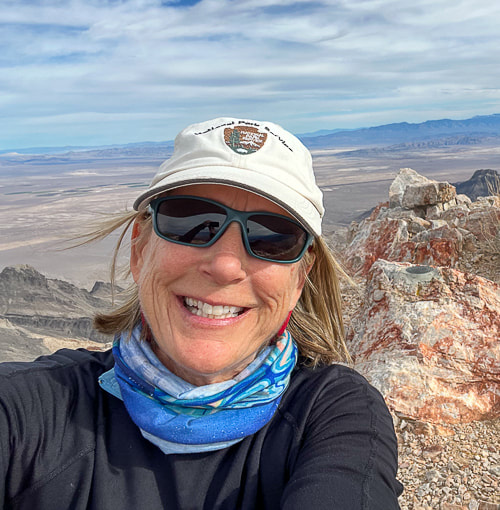|
Near Cedar Breaks National Monument, journey through a stream that has carved a spectacular gorge through rocks laid down during the time of the Western Inland Sea. Related Hiking back from Rattlesnake Creek and Lake Creek waterfalls. Seeing Rattlesnake Falls for the first time with Lydia and Colin! Trip Stats
Highlights: Walk through a stream under spectacular sandstone walls to narrows and Lake Creek and Rattlesnake Creek waterfalls. Location: Utah's Dixie National Forest - Cedar City Ranger District, Ashdown Gorge Wilderness. Distance: Up to 8.8 miles round trip if you hike up to the end of both streams at confluence/fork, ~ 6.5 miles if just hiking left fork to the waterfalls. Difficulty: Easy effort walking on combination of rocks in stream and on stream banks. Walking more difficult with higher stream run-off. Maps and Apps: AllTrails tracks, Trails Illustrated Cedar City Markagunt Plateau #702. Coordinates: Trailhead on Utah Highway 14: 37.63463 -112.94357 Elevation: Trailhead = 7,000'. Rattlesnake Creek Falls and Lake Creek Falls = 7,672' Trailhead location google maps Considerations: Check weather forecast for nearby Cedar City and mountains above Ashdown to avoid possibility of being caught in flash floods in this canyon. I recommend old trail running shoes/closed-toed workout shoes with good tread and support. Dates hiked: 9/2/22, 9/24/22, 9/6/23. History: Named after George Ashdown who set up a sawmill there in 1898. AllTrails tracks from trailhead on Highway 14 (left) going up Ashdown Gorge to confluence, with waterfalls on left (north) route (#7 is Lake Creek Waterfall and #8 is Rattlesnake Creek Falls). Ashdown Gorge is also accessed from Rattlesnake and Potato Hollow Trails higher up (Trailhead #12). Overview Most of those traveling Utah’s Highway 14 from Cedar City to the heights of the Markagunt plateau are unaware that a spectacular hidden world is tucked away in a canyon beneath their feet and that life millions of years ago is recorded in the rocks that the canyon’s waters, over the millennia, have worn through the plateau, pushing sand grains, scouring strata and revealing infinite colors to create beautiful Ashdown Gorge. To venture through Ashdown Gorge is to experience so many exquisite elements that make up the quintessential Utah non-technical canyon hike. Soaring, overhanging walls change shape, color and texture around every stream bend. Walk by small car-sized boulders and stream-carved rocks of nearly all hues of the color spectrum. As the canyon narrows, bright green ferns grow on moist walls; hidden grottos and alcoves are cool, dark places in which to retreat and watch the water flow melodically. Conifers cling to near-vertical walls. Walk by the occasional ancient panels of preserved ripples and oyster bed fossils. Lots to take in - you could go on this hike many times and see something new. The waters of Ashdown Gorge originate from an elevation of 10,000 feet in Cedar Breaks National Monument, coursing through the Ashdown Gorge Wilderness via Ashdown, Rattlesnake, and Lake Creeks, creating beautiful waterfalls at the end of the hike, after a walk through short narrows. Alternately, you can experience Ashdown after descending from Rattlesnake Trail, whose trailhead is just outside Cedar Breaks. Our Hike Each time I've hiked this gorge, water conditions have varied. This time, the stream was higher and clouded by salmon-colored silt; there must have been a storm that carried sand from Cedar Breaks higher up creating increased run-off. A large parking area on the left of Highway 14 is the access to the lower Ashdown Gorge (see Google Maps link above in Trip Stats). A spectacular chunk of preserved ancient shoreline ripples, tilted almost vertically, has been plunked down on the right side of the creek as you ascend. You weave in and out of the water, walking through gravel bars and around boulders, over fallen flood-deposited trees. It is a unique experience to feel so tiny with tall overhanging walls close by on each side, blocking out most of the sky. "Tom's Head", a noticeable 100-foot monolith greets you at the intersection between Ashdown Creek and Rattlesnake Creek. To see Rattlesnake Creek Falls, turn left at this confluence to follow Rattlesnake Creek. Shortly, another small confluence is seen; turn left and you hike a short distance to Lake Creek Falls. Turn right, hike through an ever-narrowing canyon, you hear Rattlesnake Falls before you see it - a long sheet of white water spilling into a multi-colored gravel pool. If, instead you turn right at Tom's Head, you will be continuing walking up Ashdown Creek ultimately to Ashdown Gorge Trailhead and onto High Mountain Trail and ultimately an intersection with Rattlesnake Creek Trail, which originates just north of Cedar Breaks National Park. Since moving to Utah, I have been amazed at how gorgeous and diverse the landscape is. This hike is just one example of how nature's elements fit together in harmony and draw us into a beautiful world. There's a lot to take in on this hike: textures, waterfalls, colors, something new around every bend. Interesting how a place can have so much to look at that it's almost overwhelming, but yet it is also so relaxing, and I can get to a state of "flow". I'll spend more time photographing and checking out the fossils and geology next time. For now, I will let the following images speak for themselves. Stay Close to Nature and Keep on Exploring! These ancient ripples appear to be mostly symmetrical, and are common in ancient shallow water sandstone environments where there is an oscillatory, back and forth current. Lydia looking downstream. Lake Creek Falls Colin heading downstream.
The Claron Formation, famous for its eroding hoo doos in Cedar Breaks and Bryce Canyon further to the east was deposited ~ 50 million years ago, rises still further above, reaching 10,000 feet of elevation at Cedar Breaks. The highest elevation on the Markagunt plateau is Brian Head Peak at over 11,000 feet.
A portion of the geologic map (cited below) that shows Ashdown Gorge in the dark green tributaries middle left of this map and the Claron Formation of Cedar Breaks in the orange map unit in center of map. From Biek, R., et. al. 2015. Geologic Map of the Panguitch 30' x 60' Quadrangle, Garfield, Iron, and Kane Counties, Utah. Map 270DM, Utah Geological Society. Bonus image: Kolob Reservoir near Zion National Park. Notice the engraving in tree trunk, lower left. More cool stuff on the trail. References:
Ashdown Gorge Wilderness - Wikipedia Biek, R., et. al. 2015. Geologic Map of the Panguitch 30' x 60' Quadrangle, Garfield, Iron, and Kane Counties, Utah. Map 270DM, Utah Geological Society. Cretaceous Atlas of Ancient Life: Geology of the Western Interior Seaway. National Science Foundation.
4 Comments
10/21/2022 07:22:01 am
Wow, what a magical place! Your photos do it justice. I can just imagine how devastating a flash flood would be for someone who had not paid attention to recent and upcoming weather patterns.
Reply
Yes, magical is a great word I could have used when writing this post - Indeed! The three times I have been in this gorge, the weather has not been threatening higher up. We always check forecast. This past summer of 2022 there was more frequent storms because of monsoonal weather. It is really such a colorful and restful place.
Reply
Maria Keezer
10/22/2022 08:14:03 am
Amazing photography SueBee.. as always. You have THE GIFT
Reply
Leave a Reply. |
Categories
All
About this blogExploration documentaries – "explorumentaries" list trip stats and highlights of each hike or bike ride, often with some interesting history or geology. Years ago, I wrote these for friends and family to let them know what my husband, Fred and I were up to on weekends, and also to showcase the incredible land of the west.
To Subscribe to Explorumentary adventure blog and receive new posts by email:Happy Summer!
About the Author
|
